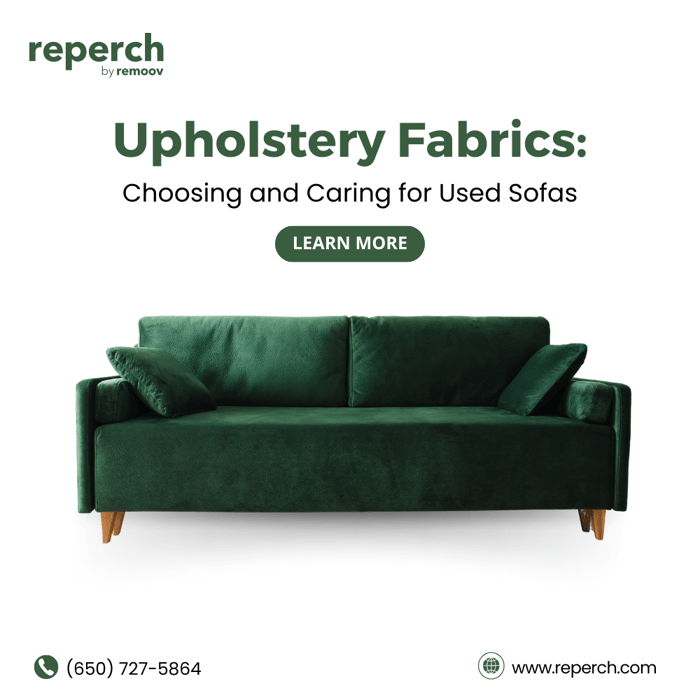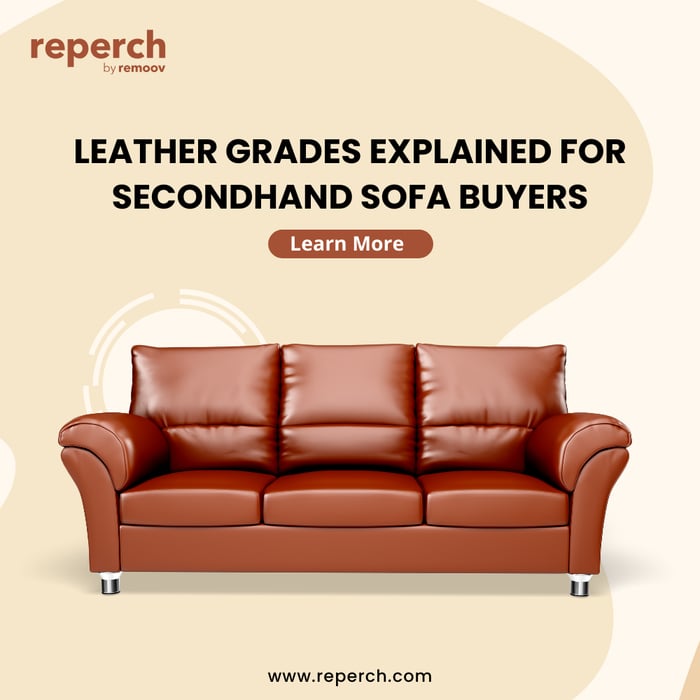A secondhand sofa can be one of the smartest and most stylish furniture buys. If you know what to look for. Upholstery fabric is more than just a design choice. It affects how long your couch will last, how easy it is to clean, and how comfortable it feels. Whether you're browsing thrift stores or high-end consignment shops, understanding the basics of upholstery fabrics helps you spot quality and make a better long-term investment.
In this guide, we’ll break down the most common fabric types, how to assess the condition of a used piece, and what to know about care and maintenance.
Why Fabric Matters on Secondhand Sofas
The fabric covering your sofa does a lot of heavy lifting. It takes on daily wear and tear, spills, sunlight, pet claws, and more. When buying used, it’s even more important to evaluate the fabric’s durability and condition because it’s already been lived on.
Here’s what makes a great upholstery fabric:
Durability: Can it handle everyday use?
Ease of care: Is it easy to clean or does it require professional care?
Style compatibility: Does it suit your space and lifestyle?
Fade and stain resistance: Especially important in homes with pets, kids, or a lot of sun exposure.
Let’s walk through the main fabric categories you’ll see on the secondhand market.
Natural Upholstery Fabrics: Pros and Cons
Cotton
Cotton is a breathable, soft fabric that resists pilling and fading. However, it can stain easily and wrinkle. Higher-quality cotton with a tight weave or stain-resistant finish is better for family rooms or high-traffic areas.
Best for: Casual spaces, low to moderate use
Check for: Soiling, fading, or loose weaves
Linen
Linen has a beautiful natural texture and feels elegant, but it soils easily and wrinkles quickly. It’s best for formal settings or adult spaces. Be cautious of stains; linen is hard to clean without professional help.
Best for: Low-use areas like formal living rooms
Check for: Wrinkling and visible wear
Leather
Used leather is durable and can age beautifully if cared for. It’s easy to wipe down and hard to stain, but poor-quality leather may crack or peel over time.
Best for: High-use spaces, pet owners
Check for: Dryness, cracks, or deep scratches
Wool
Wool and wool blends are resilient, insulating, and resistant to fading or pilling. Blended versions are easier to clean and hold up well in most homes.
Best for: Cooler climates, family spaces
Check for: Any “felted” texture from wear
Synthetic Fabrics: Affordable and Durable Options
Microfiber
Made from polyester, microfiber is soft like velvet but extremely stain-resistant. It’s one of the best options for households with kids or pets.
Best for: High-traffic family rooms
Check for: Signs of matting or oil-based stains
Polyester Blends
Often blended with cotton or wool, polyester helps prevent wrinkling and fading. However, it can pill if not blended properly.
Best for: Everyday use on a budget
Check for: Surface wear and pilling
Olefin (Polypropylene)
This is a durable, stain-resistant, and water-repellent fabric. It’s even bleach-cleanable in some cases and made from upcycled materials.
Best for: Outdoor furniture, sunrooms, active homes
Check for: Fabric brittleness or fading
Vinyl
Vinyl mimics leather but costs less. It’s easy to clean and works well for dining benches and entryway furniture.
Best for: Busy homes or rental properties
Check for: Cracks or discoloration in high-use areas
How to Assess Upholstery Quality When Buying Secondhand
When evaluating a used sofa, the fabric tells part of the story. Here’s what to inspect before you buy:
Tightness of the weave: Tighter weaves generally wear longer.
Double rub count: If the tag is available, look for 15,000+ double rubs for home use.
Odor check: Fabrics can hold on to smoke, mildew, or pet smells.
Cushion seams: Check for pulled stitches or stretched fabric.
Color fading: UV rays can bleach certain fabrics unevenly.
Wear zones: Look closely at the armrests and cushions; these areas wear out first.
If the frame is solid and the structure is in good shape, don’t rule out reupholstering. A well-built couch with worn fabric may still be worth the investment.
Caring for Upholstery: Maintenance Tips That Extend Life
No matter the fabric, regular care can stretch the life of your couch. Here’s how to keep it looking its best:
Vacuum weekly: Use a brush attachment to remove dust and debris.
Rotate cushions: This helps prevent uneven wear.
Blot spills quickly: Don’t rub just dab and use a mild fabric cleaner.
Use slipcovers or throws: Especially helpful for daily-use pieces.
For delicate fabrics like silk or linen, hire a professional cleaner annually. For synthetics and microfiber, spot cleaning with mild soap and water works well.
Is Reupholstering Worth It?
If you fall in love with a secondhand couch but the fabric is past its prime, reupholstering can be a smart option. Just make sure the frame is solid and the piece is worth the investment.
When choosing new fabric:
Use tight weaves for durability
Stick to neutrals for long-term style
Consider your home’s lighting and daily use
DIY upholstery can save money, but it requires time, tools, and patience. If in doubt, hire a professional and let them guide fabric selection.
Final Thoughts
Buying secondhand is one of the best ways to find high-quality sofas at a fraction of the cost. But the key to a smart purchase lies in the fabric. Know what you're looking for, assess the condition honestly, and don’t be afraid to walk away from a piece that shows more wear than it’s worth.
At Reperch, we carefully inspect every secondhand piece. So you can shop confidently, knowing you’re getting something that’s both stylish and durable. Whether you're browsing for your first apartment or upgrading your family room, our curated collection makes it easy to find a sofa you’ll love for years to come.








